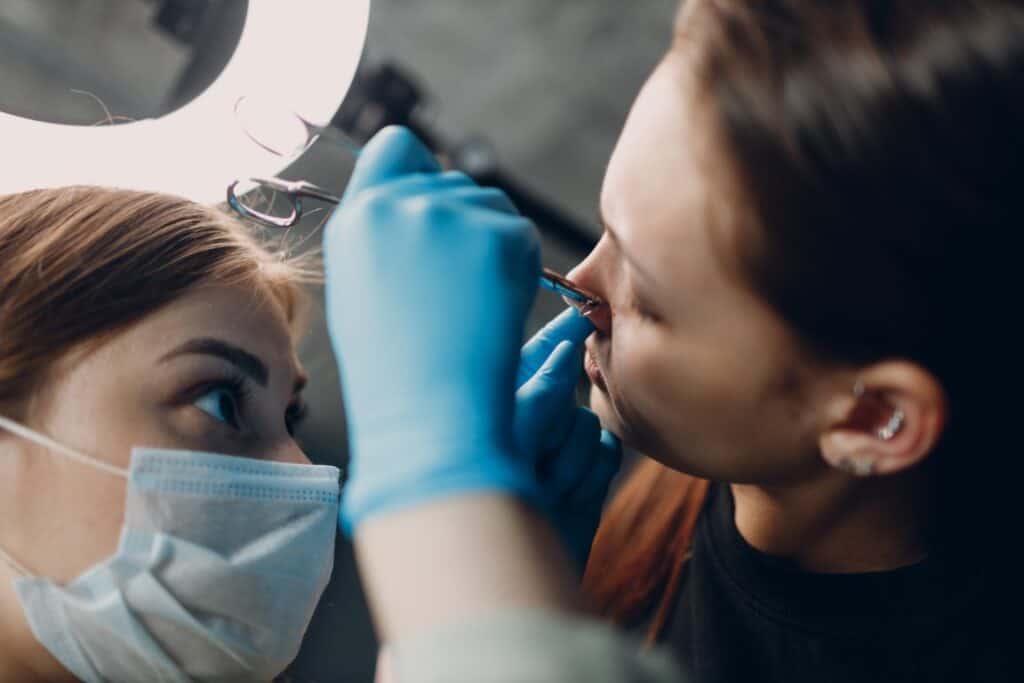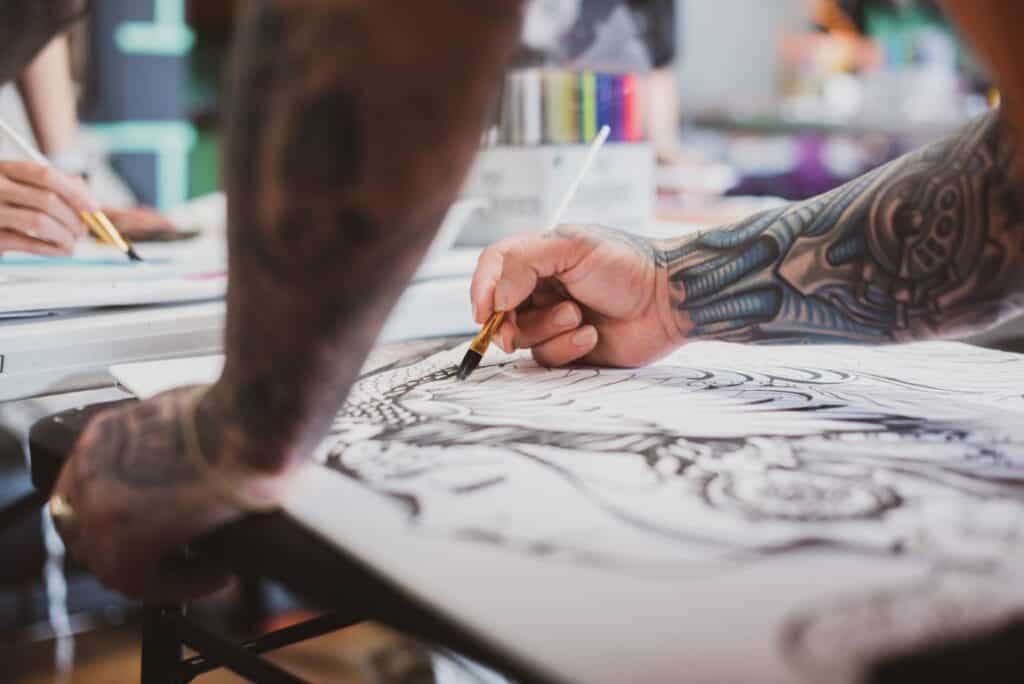Hi tattoo apprentices and tattoo apprentice wannabe’s, welcome! Assuming by the fact you’ve clicked on this article, you probably want to become a tattoo artist.
It can seem intimidating to get into the tattoo industry, since there’s no ‘real’ official way of doing it. There’s no tattooing major nor minor at colleges, no tattooing courses in highschool.
By now, there’s a few tattoo ‘schools’ that have come up – but let’s be honest, there’s no way you would be able to start working after ‘graduating’ their courses. This profession takes years of practicing to get to a professional level.
Even if you do some workshops that these ‘schools’ provide, you’ll still need to practice tattooing afterwards. Here’s how.
Table of Contents
Why it's necessary to practice
In the region we come from, ‘tattoo schools’ are not that great.
But the same can be said from certain ‘apprenticeships’.
It all boils down to the teacher or mentor.
If your teacher is making high quality tattoos, has high work ethics and pays great attention to cleanliness, then chances are your apprenticeship, or school, or whatever the word is, .. will be good.
When do we not like tattoo schools? If the work of the teacher(s) is not shown, or is shown and it’s bad.
These days you can find apprenticeships, schools, digital courses, workshops, seminars, Patreons, .. etc. What’s in a word?
Any digital course, workshop, seminar, .. with a bad teacher = bad.
Any apprenticeship, seminar, school, .. with a good teacher = good.
Who thinks that ‘bad schools’ are really good for a fast crash course on the techniques, or to get a feel if this is something for you: think again. Since ‘bad schools’ don’t select students based on their portfolio, it does sound great if you’re impatient or don’t know how to do research on techniques, however, there’s a risk you’ll start to run before you’ve learned to walk.
Unlearning bad practice is way harder than learning from start in a good way. That’s why good mentors are reluctant to accept apprentices that started in given school: there might be more unteaching to it.
If your drawing skills are already where they need to be before you start tattooing (but are they ever?), then you can start practice-tattooing even without a mentorship. Note that we’re not talking about actual human skin!
+ you can have the same unlearning disdadvantage later on.
Teaching someone how to tattoo - impossible task
You probably already know that teaching the art of tattooing is really difficult and if you don’t, we’ll fill you in. Every single tattoo artist has their own preference for setting up their station, wrapping their tattoo machine, which needles they use for what…
Yes, there are lots of guidelines everyone should follow when they’re starting, but in general, tattooing isn’t black and white. There are lots of gray areas, hence why it’s so hard to teach it and why there aren’t official school curriculums.
When you go and practice (on synthetic skin) you’ll find things that work for you! This doesn’t mean there aren’t mistakes to be made, of course. It’s the reason why you really have to do your research on every single thing!
If you’re not practicing for your apprenticeship, it means you don’t have one and if you’d want to get one in the future, it’ll be hella difficult if you’ve taught yourself wrongly. Lots of gray areas, yes, but lot’s of things you shouldn’t do aswell! This is why everybody will tell you to stay away from tattoo machines before you’ve had the opportunity to learn from someone with experience. They can guide you into finding what you’re doing wrong and what might work better for you!
In our opinion however, if you do your proper research and can get some intel from tattoo artists you know – there isn’t that much you can do wrong as long as you stay away from human skin!
Disclaimer: we still recommend learning through an apprenticeship! This is more suitable for those that are interested in tattooing, but don’t want/can’t start a career. Look at it as another way of artistic expression!
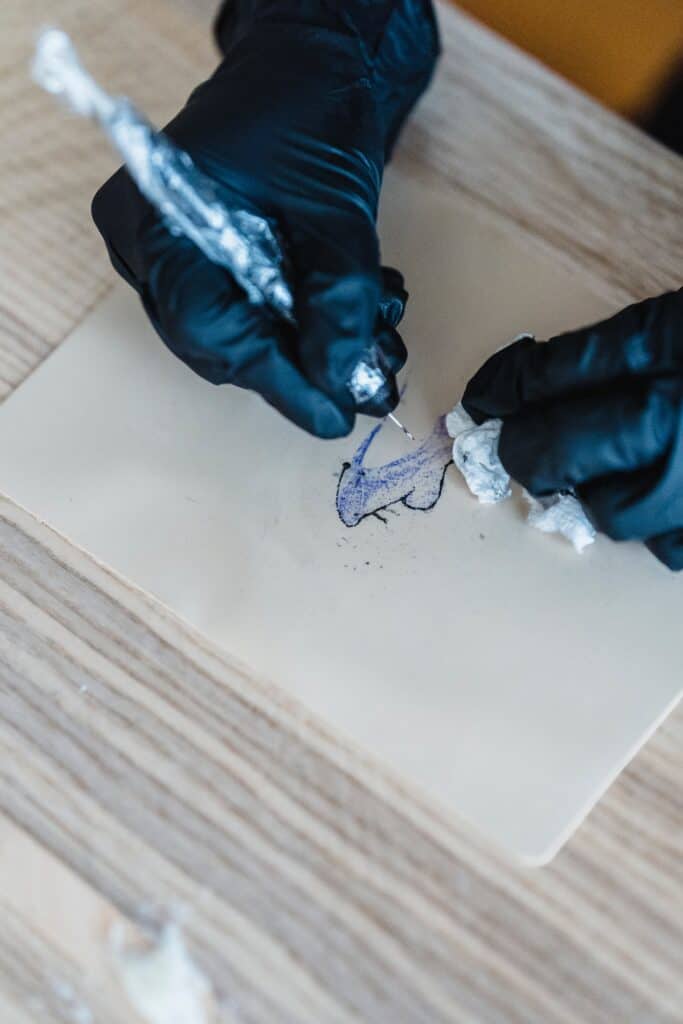
Why you should stick to practice skin
There’s just no way you wouldn’t f*ck up someone’s body parts if you go ahead anyways and tattoo them at home.
There are multiple things and more specifically, sterilization requirements, you’ll need to follow. With a home set up, that’s simply impossible, unless you can dedicate a separate room. Even then, it’s hard to figure out what you need to do and how, sterile-environment-wise on your own. If you do, you’re bound to make mistakes that can be fatal.
If you were practicing on human skin with a mentor, they’d be able to spot the mistakes and would stop you before u do something really risky.
Besides the infections you might give your friends, you can also eff up the design. You don’t want to mark your friends with something shitty that has your name on it, do you?
Ways to practice
There are a few different ways you can practice tattooing in order to prepare yourself for the different situations you might come across. From tattooing on fruit to using henna and more! Let’s go in a difficulty order.
Start with drawing
If you weren’t aware, a huge part of the job is drawing. For that you’ll need the drawing skills required. Start on paper! There’s no simpler way to put it in words than: practice makes progress.
There are multiple ways to learn how to draw on your own. If you can’t afford classes or art academy, there are PLENTY of youtube videos and resources online, for free!
There are also cheap online courses that websites like domestika and skillshare offer. Cheap as in not expensive prices. Downside with skillshare is that you have to get a subsciption, BUT they do 30 day free trial promotions all the time! Domestika is even better as you don’t have to pay for a subscription, you can buy individual classes which you get to keep for life.
Here’s a few more tips:
Start simple. If you haven’t been practicing regularly your whole life, learn how to walk first.
Look up ‘drawing basics’ or ‘how to learn to draw’, ‘drawing for beginners’ on youtube. You’ll come across something you like. (and follow our Youtube channel while you’re there 😉 )
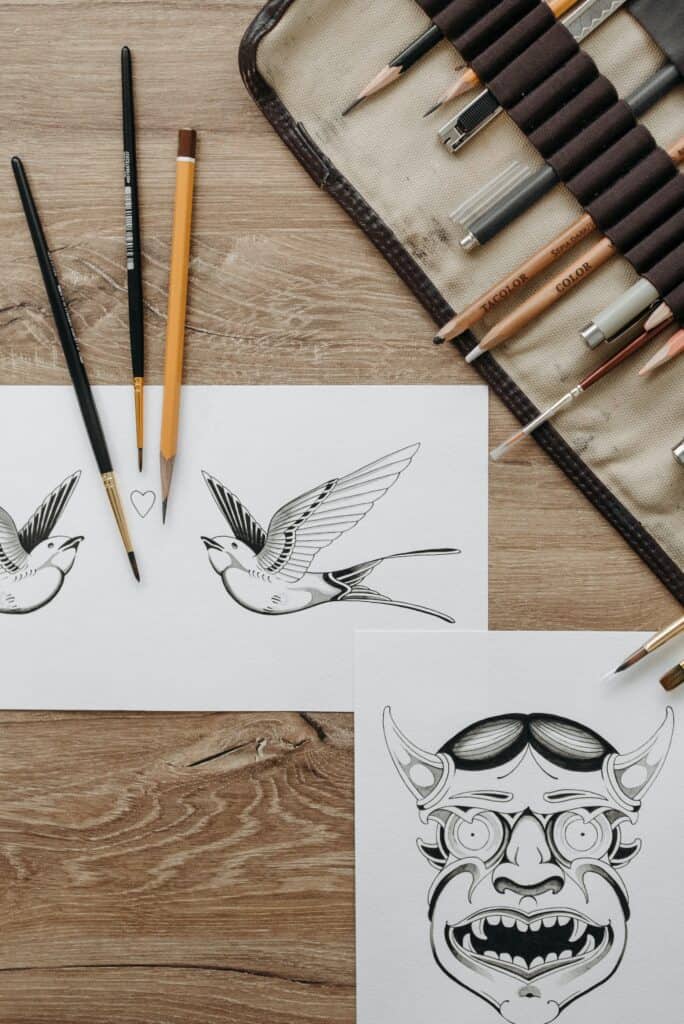
There are also tattoo artists on youtube who upload designing tutorials.
American Traditional and Neo-traditional are 2 styles that are relatively simple to start with and great for learning the fundamentals of drawing! They’ll teach you about color theory and how to pull clean lines!
Recreate your favorite artists’ artworks.
There’s nothing wrong with recreating an artwork as long as it’s for learning purposes. Don’t market it as your own and give credit!
By attempting to recreate an artwork, even if you don’t know where or how to start, you’ll figure it out on your own. It’s the best way for understanding the way of certain techniques you admire.
Retrace your sketches in ink, practice linework!
Unless you want to be a realistic tattoo artist, linework will be a must to master on paper before you move onto a machine.
Use your friends' body parts
Don’t be thinking about unholy stuff now. We mean this in the drawing context!
Drawing on paper or practicing tattooing on fake skin is one thing, doing it on the human body is another. Once you start tattooing, you’ll quickly notice that there’s a huge difference from the flat surfaces you’re used to working.
A way to (partly) overcome that before you actually start, is to draw on friends! Get a non-toxic marker and freehand some stuff.
You can also ask them what they would like if they were to get a tattoo. This way you’ll also challenge your abilities as an artist to design as you go.
Research about the freehand tattooing process. It’ll definitely come in handy! Even if you’re not interested in freehand tattooing, there’ll be times when your stencil will smudge. Knowing how to draw on the human body will help you with that. You can also draw on fruit if there’s no one willing to help you with this.
Last tip we can give you for this is, try out henna! Henna is a traditional dye that has been used since the Bronze Age to embellish girls’ bodies. It can stain the skin for up to two weeks, so perhaps hold this method off until you’ve advanced a bit with your drawing skills. Be carefull, people can react allergic to henna way more often then with real tattoos.
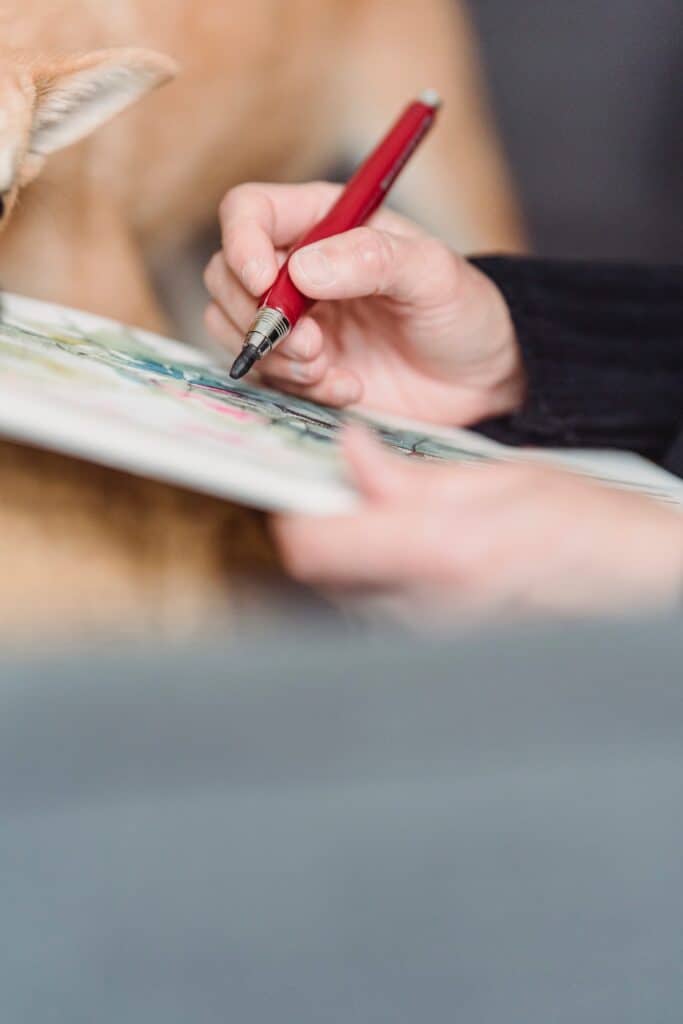
Introduction to the equipment
Although tattooing is definitely an art-form aswell, the equiptment is totally different! The tattoo machine is thicker and heavier than your pencils or pens, the skin is inconsistent unlike your paper, etc… The art media is just barely comparable to those you’re used to. There’s a few things you can do beforehand to make the transition a tad easier later on.
A tattoo machine is heavy. Even with the newer tattoo pens, that are lighter than the classic coil and rotary tattoo machines, there’s some additional weight.
Find a way u can comfortably add weight to the drawing utensil you use most often. There are places that sell specific weights for pencils.
To get used to the thickness a tattoo machine has, you can also add an additional pencil grip! Lots of places sell these as well and they’re not that expensive.
Another way of doing it, is buying tattoo griptape and
wrapping your drawing utensil as if you’d wrap your tattoo machine!
If you combine both, the transition to a tattoo machine will be a tad smoother when the time comes!
How about an actual tattoo machine?
Well, if you have the money, there are plenty online stores that sell them without the demand of a license. You can buy a cheap tattoo machine and start practicing, on synthetic skin (or pig skin if you’d like) and fruit, of course!
We recommend you learn about rotary and coil tattoo machines before you buy your first tattoo machine, though! There are many different tattoo machines and some are easier to learn with than others.
There are also synthetic body parts you can purchase. Those are a bit more expensive than regular synthetic skin sheets, but if you have the money, it’s an investment you wont regret! Tattooing those is more challenging than a flat surface and at the end of it, you have a cool piece to display. Who knows, maybe one day you can set it up somewhere in your future booth at your future workplace!
When it comes to setting up your tattoo machine, depending on which kind you get, there are plenty of instruction videos out there. Do the research and try out stuff.
We have to mention, that the cheap ones online only can only serve you as a practice machine, as it should. They’re often not the greatest quality and they might not give the best results, but, you get what you pay for.
Tip for the highly sensitive people who wouldn’t be able to bare the loud machine operating sounds:
Look foor pneumatic tattoo machines! It’s the most silent type of tattoo machines.
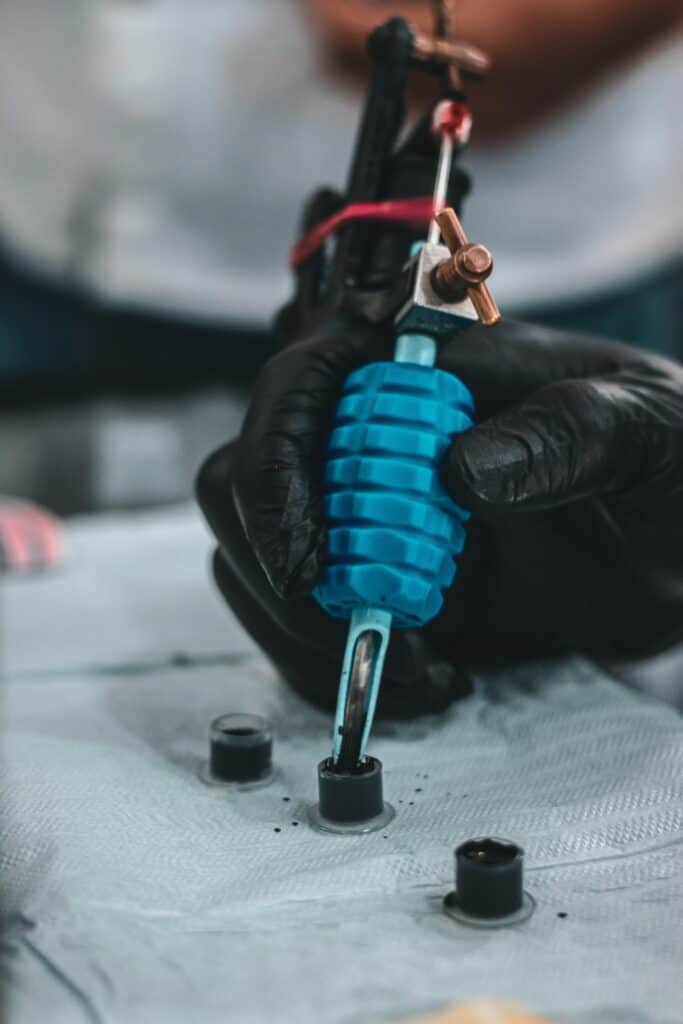
Practicing with the tattoo machine
When it comes to practice-tattooing, fake skin is a good place to start. Before you move on to contoured objects like fruit or synthetic arms, you need to learn the fundamentals first. Theres a few techniques like lining, bloodlining, shading, peppershading, whipshading, etc… you’ll have to master before u can go for a more intricate design.
Practice on silicone skin
Although silicone skin is a great tool, one that many professional tattooists didn’t have when starting off, it still isn’t the easiest to work with.
It’s not the best for learning the needle depth, but it’s better than experimenting on a person’s body part.
It is beneficial for getting your line work to an okay level and practice shading techniques! You can also try to make an artwork out of it. Some artists frame their tattooed silicone skin and display it aswell.
Tips:
Finish your original pencil drawing.
If you’ve shaded/colored in your original pencil drawing, it’ll be way easier when trying it on silicone skin.
Don’t use too much stencil stuff!
Since it’s silicone and it doesn’t have pores like real skin, it can take a bit longer for the stencil stuff to get tacky. Make it easier on yourself and don’t use too much! Your stencil paper will just slide right off otherwise. You can also eave your blueprint to dry overnight.

Practice on fruit
Fruits are contoured objects. This is a great tattoo practice for simulating body parts! It’s easy to find, relatively cheap and if they have a thick skin, you can eat them afterwards! (although, at your own risk)
Bananas for example, are delicate and ‘bruise’ easily. Those can teach you how to work light-handed.
Another great one is a squash! They can simulate working on an arm since they’re a bit bigger and therefore (for some) more awkward.
Practice on pig skin
If you want the closest thing to human skin, go to your local butcher and get some pig skin.
It is very similar to our own skin and is usually very cheap! Some butchers might even give it away for free.
The stencil paper issue wont be such a problem anymore since now you have pores (hallelujah) and it will help you understand the correct needle depth much better!
The downsides however are, that it can get very smelly very fast, and it’s not for those who can’t handle gore. Okay, gore is maybe overexaggerating it a bit, but it’s definitely not for the squeamish. You also need to educate yourself about crosscontamination in this case. You don’t want drying pigblood and plasma on your tv remote and cellphone.
Keeping it as a cool piece of art is also impossible, you have to throw it away after a few days. Unless you decide to freeze it in, but what’s the point in doing that if you can’t showcase it? It’s not optimal for tracking your progress either.
You should also know that majority of the professional tattoo artists find this method unnecessary. If you can pull straight lines on synthetic skin, you should be able to start. This goes only for the apprentices, not for the enthusiats at home!
It’s a good method, however, for those at home who just want to know what it’s like.
FAQ
Network as much as you can and be persistent!
We go more in depth about this topic in our ‘how to get an apprenticeship’ article.
Becoming a professional tattoo artist means you have to learn. To learn, means you’ll have to get an apprenticeship, because practicing on your own will only get you so far.
There is no easy way even if you try to wing it from home.
Because drawing is 50% of the job.
Yes, as long as it’s only for learning purposes.
Copying somebody else’s artwork is never an okay thing to do. It wont get you anywhere. If you want to learn however, it’s perfectly fine as long as you give credit where credit is due.
Pig skin! if you don’t mind the smell and fluids coming of it..
The epidermis of pig skin (the second layer of the skin, where the ink should be deposited) has a comparable thickness of that to human skin.
Because it is dangerous. Unless you are working as an apprentice under a mentor, you run high risks of poor hygiene practice.

